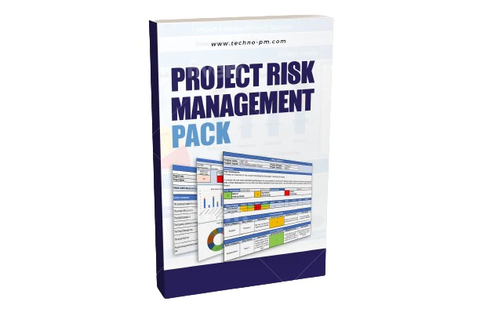An Overview of Risk Breakdown Structure (RBS)
The problem with a failed venture cannot be wholly attributed to a fault in its planning or execution. There are often uncontrollable and unpredictable factors that result in complete disarray and cause a plan or project to fail. These factors could be anything from an increased cost to botched machinery or something else entirely. Here is where a Risk Breakdown Structure (RBS) becomes crucial, as it can zero down on the most likely threats related to a project and aid to handle them better.

Probably the most juvenile mistake to make during the planning phase is to formulate a plan of action without considering the many hurdles that could come along the way. A Risk Breakdown Structure is not only essential to project those risks but to work around them and achieve improved outputs.
What Is A Risk Breakdown Structure?
A Risk Breakdown Structure (RBS) is nothing but a visual representation of all likely risks and their probable effects on a venture. This representation can be in the form of a chart that depicts every possible hurdle that may affect the performance or execution of the project. Generally, the identified risks may be categorized depending upon their diverse elements.
An RBS correctly pinpoints potential issues and determines their severity and likelihood of occurrence. It facilitates the devising of steps to prevent such hindrances from either happening or putting a strategy in place to deal with those hurdles that still can salvage improved productivity.
The constraints may be categorized in terms of Program, Finance, Methodological, Supervision, Client or Customer, Agreements, Natural Cause, Geopolitics, etc. Once these constraints are identified, these hindrances and risks thus established may be further bifurcated into subdivisions to clearly understand and handle their particular effect.
How To Use A Risk Breakdown Structure?
There are no limitations to what a company can do with some useful data that directly affect their operations; with endless possibilities, RBS also contributes to its growth. Using a Risk Breakdown Structure effectively ensures that the project is always protected against those risks and also further facilitates planning several branch projects as well. Apart from this, the structure can be used in different ways to ensure a result for the company, such as the following
Risk Identification Aid
Naturally, at the top of the list of assistance provided by RBS is the identification of risks. As the single most crucial element of the structure, it includes listing down all possibilities and probable threats that may hinder the operations of any project. It generally involves bringing the project team together and suggesting any possible threats. The list thus generated may allow the project manager and the upper management to look at all potential risks and identify their severity.
Risk Assessment
The list of identified risks is evaluated for their severity and probability of occurrence. The assessment of risk enables the management to break down further the impact of the risk on a scale of minimal to maximum. A probability and Impact score derivation may allow the project manager to set the list of risks in order of their impact severity.
This phase also enables the manager and the team to dig deeper into the source and , cause of that threat, and the correlation between the project plan and the potential risk. This may help tweak the plan further to accommodate such risks directly caused by the plan itself.
Risk Reporting
The Risk Breakdown Structure allows the project manager to share the chart with upper management and other patrons or benefactors. This helps notify involved parties of all the risks associated with the particular project. It further necessitates the need for an effective risk assessment system that evaluates risks, scores, and analysis for the management.
Risk Identification Strategies
A comprehensive RBS also facilitates the formulation of various strategies to identify possible risks associated with the project. These strategies, in turn, also present many opportunities to fine-tune the project plans. There are many strategies that a project manager can turn to, and each can identify a certain set of risks and also empowers the manager and the team.
Brainstorming
Brainstorming is always productive in terms of getting the best output from the team and the managers. This also ensures that the team is thoroughly involved in a particular project and is well capable of tackling any hindrance to the project. Typically, there are different phases of brainstorming that help identify all the risks involved in the project. Brainstorming also provides a systematic arrangement of all the categories of the risks and their further breaking down.
Document Reviews
Each document pertaining to the details of an effective RBS formulation can be used to zero down on the factors related to every individual group and sub-grouping of risk. Document reviews also assure that the details are appropriately answered at every phase.
SWOT Analysis
Strengths, Weaknesses, Opportunities, and Threats i.e. SWOT Analysis stresses the significance of evaluating a plan of action. While Strengths and Weaknesses are intra-company elements that can be governed inside an organisation's strategy, Opportunities &Threats are exterior elements that are identified to be beyond the company's grasp. SWOT Analysis aids in much more efficiently identifying blind spots in operations or plans.
Summing It Up
Effective implementation of a plan of action depends clearly on the knowledge of all the risks and opportunities involved with the project. While by design, a project is intended to make the most of opportunities, a simplified strategy to identify risks and their impact also goes a long way in getting the desired results.
Risk Breakdown Structure (RBS) is a simple yet effective tool for any company’s board, management, and staff. It makes the most of possibilities, analyses and mitigates risks, and perfects the outline to achieve the goal.




